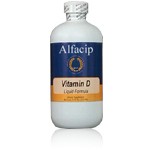Rickets: Understanding the Causes, Symptoms, Treatment, and Prognosis


Rickets is a disorder of growing bones that primarily affects children. Although considered a disease of the past in many developed countries, rickets continues to be a health concern in certain populations due to nutritional deficiencies and genetic factors. Characterized by soft, weak bones, the condition often results from a lack of vitamin D, calcium, or phosphate — all crucial for healthy bone development. This article explores the medical definition of rickets, its underlying causes, common symptoms in children, and how treatments like Alfacip contribute to managing the condition effectively.
What is Rickets?
Medically, rickets is defined as a pediatric skeletal disorder in which the mineralization of bone is defective due to disturbances in calcium or phosphate metabolism. The bones become soft and prone to deformities, especially under the pressure of weight-bearing. The disease is most commonly observed in children between 6 months and 3 years of age, which is a critical period for bone development.
The term "rickets" is typically used for the condition in children, while the adult counterpart is referred to as osteomalacia. Both share similar pathophysiological mechanisms, but rickets uniquely affects the growth plates of children's bones, causing distinct deformities.
What Causes Rickets?
The primary cause of rickets is a deficiency of vitamin D, which plays a critical role in calcium and phosphate metabolism. When the body lacks adequate vitamin D, calcium and phosphate cannot be properly absorbed from the gastrointestinal tract, leading to poor bone mineralization.
Vitamin D deficiency can result from various factors:
- Insufficient sunlight exposure: Since vitamin D is synthesized in the skin upon exposure to ultraviolet B (UVB) rays, children living in areas with limited sunlight or those who spend little time outdoors are at increased risk.
- Inadequate dietary intake: Infants who are exclusively breastfed without vitamin D supplementation, or children with poor diets low in calcium and phosphate, may develop rickets.
- Dark skin pigmentation: Individuals with darker skin have more melanin, which reduces the skin's ability to produce vitamin D in response to sunlight.
- Malabsorption disorders: Conditions like celiac disease, inflammatory bowel disease, or cystic fibrosis can impair the absorption of vitamin D and calcium.
- Liver or kidney disorders: Since vitamin D undergoes activation in the liver and kidneys, diseases affecting these organs can lead to functional vitamin D deficiency.
Besides nutritional and environmental causes, some rare genetic forms of rickets exist, such as X-linked hypophosphatemic rickets, where phosphate reabsorption in the kidneys is impaired.
What are the Symptoms of Rickets in Children?
Children with rickets often present with a wide spectrum of symptoms, which can range from mild to severe, depending on the duration and severity of the deficiency. The symptoms are typically related to bone deformities and developmental delays.
Common signs and manifestations include:
- Delayed growth and development: Affected children may be shorter than their peers and experience delayed milestones such as sitting or walking.
- Skeletal deformities: These are the hallmark signs of rickets. Bowed legs (genu varum), thickened wrists and ankles, and deformities in the rib cage (rachitic rosary) are frequently observed.
- Muscle weakness and pain: Children may complain of bone pain, particularly in the legs, pelvis, or spine, and exhibit hypotonia or general muscle weakness.
- Dental problems: Delayed tooth eruption, defective enamel, and increased risk of cavities can also occur.
- Seizures or spasms: In severe cases, low calcium levels due to rickets can cause tetany or convulsions.
If rickets is left untreated, the deformities can become permanent, and growth may be stunted. Early diagnosis and intervention are crucial for reversing the bone changes and preventing complications.
Do Rickets Go Away?
Yes, in many cases, rickets can be effectively treated and even completely reversed, especially when identified early. The prognosis largely depends on the underlying cause and the timeliness of treatment initiation. Nutritional rickets, which is due to dietary deficiency or lack of sunlight, generally responds very well to vitamin D and calcium supplementation. Within weeks of starting treatment, improvements in symptoms and radiographic changes in bones are often evident.
However, genetic or renal causes of rickets may require long-term or lifelong management. In such cases, the condition might not fully “go away,” but proper medical interventions can control the symptoms and improve the child's quality of life. Physical therapy and orthopedic surgery may sometimes be needed for severe skeletal deformities that do not resolve with medical treatment alone.
The Role of Alfacip in the Treatment of Rickets
Alfacip, which contains alfacalcidol, is a vitamin D analog used in the treatment of conditions related to vitamin D deficiency, including rickets and osteomalacia. Alfacalcidol is a synthetic derivative of vitamin D that requires only one step in the liver to be converted into the active form of vitamin D (1,25-dihydroxyvitamin D), bypassing the need for renal conversion.
This feature makes Alfacip particularly useful in treating patients with chronic kidney disease or other conditions where the final activation of vitamin D is impaired. In the context of rickets, Alfacip plays a significant role in:
- Promoting bone mineralization: By increasing calcium and phosphate absorption from the intestine, Alfacip helps restore the mineral balance necessary for proper bone hardening and strength.
- Correcting hypocalcemia: It raises serum calcium levels, which alleviates symptoms like muscle spasms and tetany.
- Normalizing parathyroid hormone (PTH) levels: Secondary hyperparathyroidism can occur due to chronic low calcium, and Alfacip helps bring PTH back to normal, further stabilizing bone turnover.
- Improving physical symptoms: Regular use leads to resolution of bone pain and muscle weakness and supports the correction of deformities in growing children.
Alfacip is typically prescribed under close medical supervision, as inappropriate use can lead to hypercalcemia or hyperphosphatemia. Monitoring blood levels of calcium, phosphate, and kidney function is essential during treatment.
Conclusion
Rickets, though often preventable, remains a significant health issue in many parts of the world due to nutritional deficiencies, genetic disorders, or systemic diseases. The condition is primarily caused by inadequate vitamin D, calcium, or phosphate, and manifests through skeletal deformities, growth delays, and muscular symptoms in children. With early diagnosis and intervention — including vitamin D supplementation and therapies like Alfacip — rickets can often be successfully treated or managed. For parents and caregivers, ensuring children get adequate sunlight, maintain a balanced diet, and attend regular health check-ups can go a long way in preventing this condition.
Medically Reviewed by Dr. Faride Ramos, MD
(Updated at Apr 25 / 2025)
